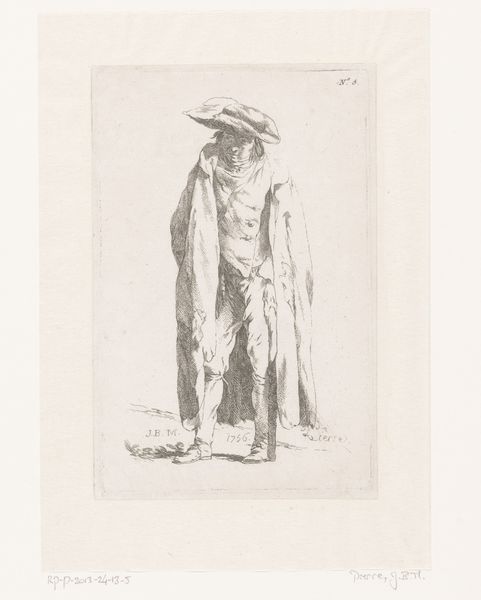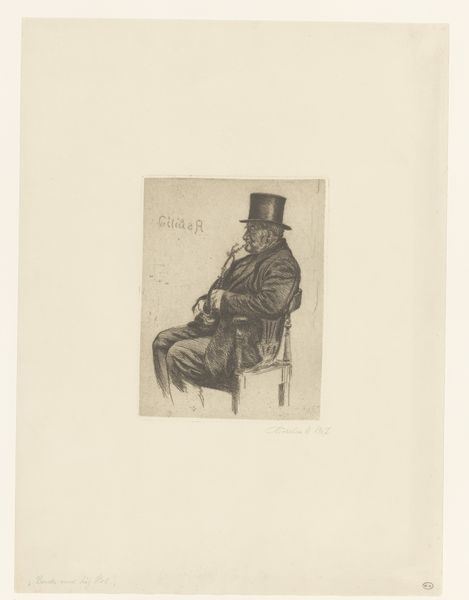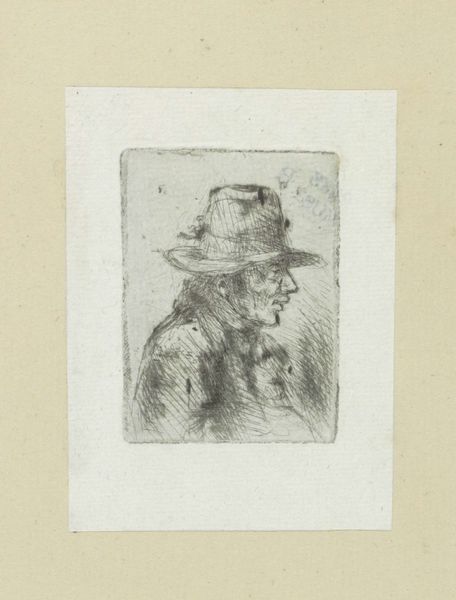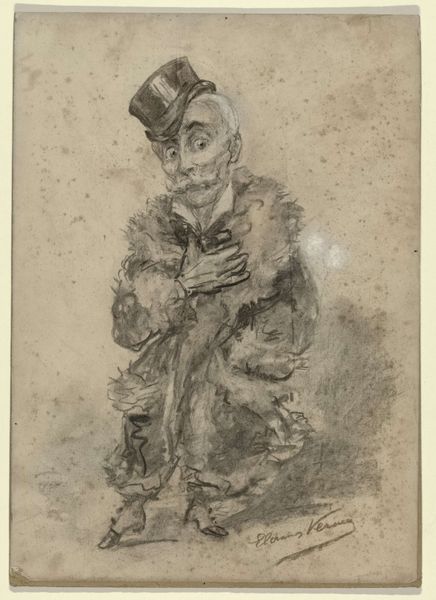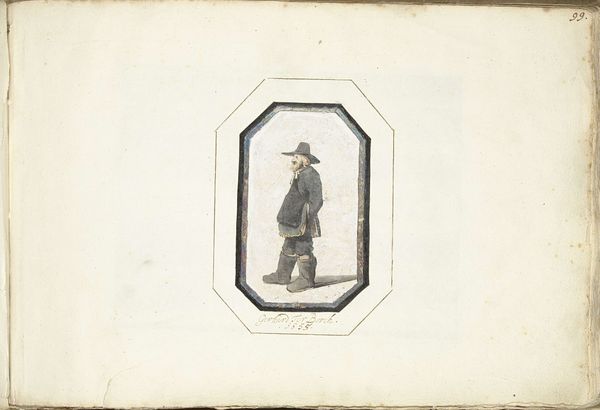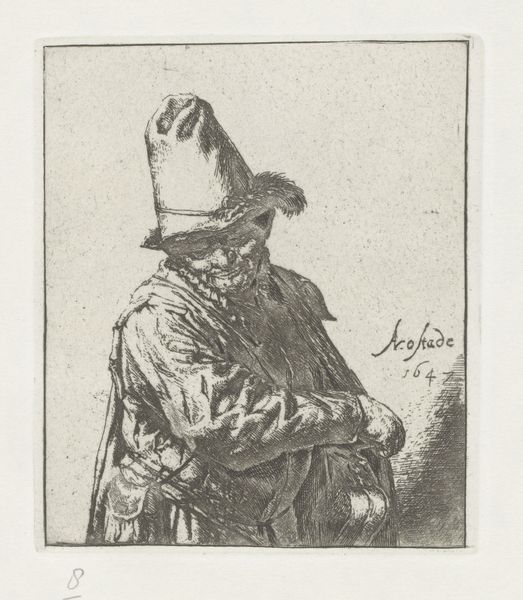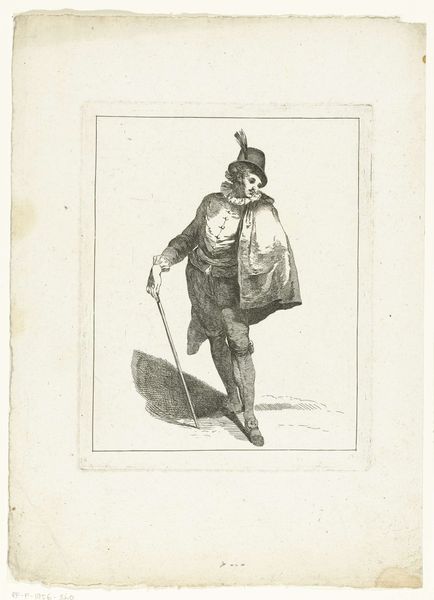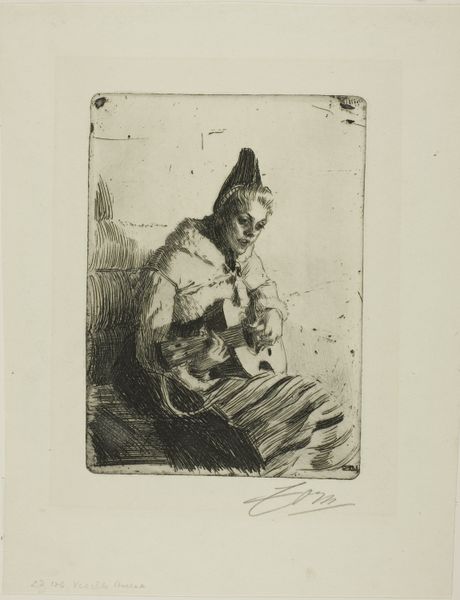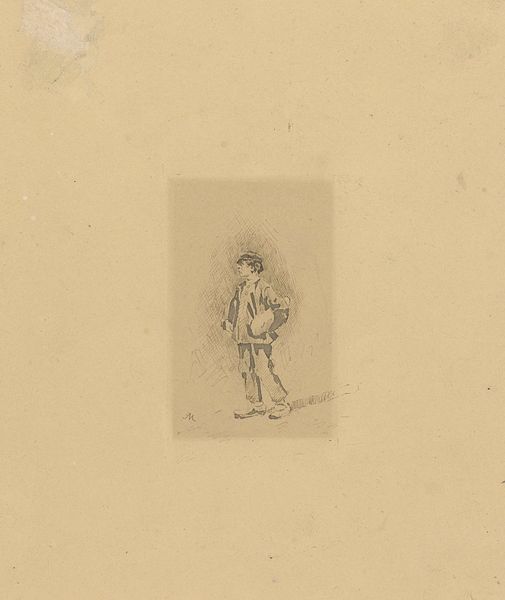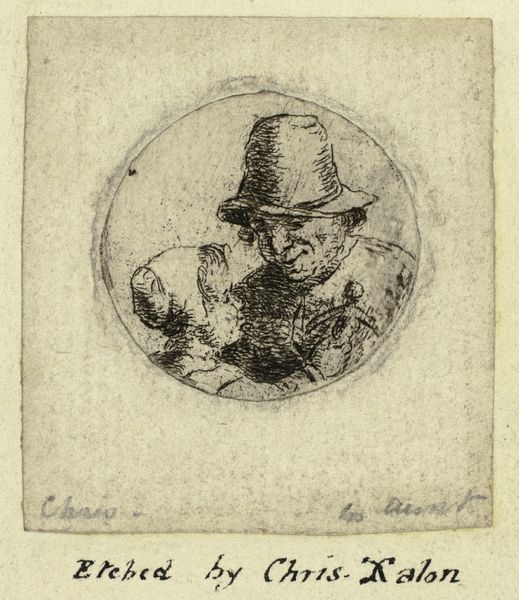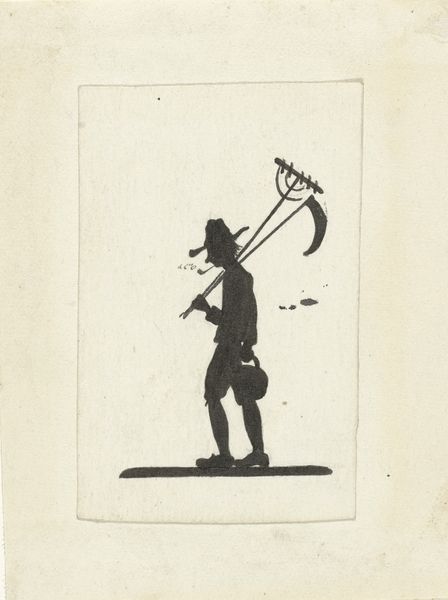
drawing, ink
#
portrait
#
drawing
#
pencil sketch
#
ink
#
genre-painting
#
realism
Dimensions: height 65 mm, width 51 mm
Copyright: Rijks Museum: Open Domain
Curator: This evocative work by Kornelis Jzn de Wijs is titled "Koopman met een juk op de schouders en een bloemkool voor zich", created sometime between 1842 and 1896. It's executed in ink and pencil. Editor: Immediately, the texture catches my eye – the rough sketchiness lending a gritty realism to this image of a working man. There’s almost a sympathetic gaze in his eyes. Curator: Absolutely. De Wijs was very interested in portraying scenes from everyday life, and often depicted the working class. You can feel the weight of his labour through the detail. This piece fits firmly within the Realism movement. Editor: And that realism extends beyond just the subject matter. His posture, with the yoke across his shoulders, that tells a story. The cabbage he carries almost obscures his hands, making me think about the hidden labour inherent in feeding a community. Is he weighed down by more than just produce? Curator: It's compelling to consider the social commentary imbedded within what at first glance looks like a simple genre scene. De Wijs himself was very politically active; I wouldn’t be surprised to find political undertones related to working conditions. Editor: Precisely! The detail, the unflinching portrayal—it prompts us to question who is rendered visible and under what conditions. The cabbage here might signify nourishment, but perhaps also the economic precarity of those who provide it. Curator: The choice of medium only adds to that feeling, don’t you think? The stark ink lines and raw pencil strokes make this drawing feel immediate, as if capturing a fleeting moment from life as it unfolds in a public place. Editor: Definitely, there’s nothing romanticized here, no filter between artist and subject. It is not idealized, that is clear. De Wijs presents us a slice of life, and by doing so he challenges us to contemplate the realities of labour, survival, and dignity within a burgeoning capitalist system. Curator: It truly resonates even today, I think. We’ve barely scratched the surface but, in our conversation, perhaps we can see how history remains eternally present. Editor: Indeed, reminding us that art can speak across generations and spark critical reflection on power and representation.
Comments
No comments
Be the first to comment and join the conversation on the ultimate creative platform.
